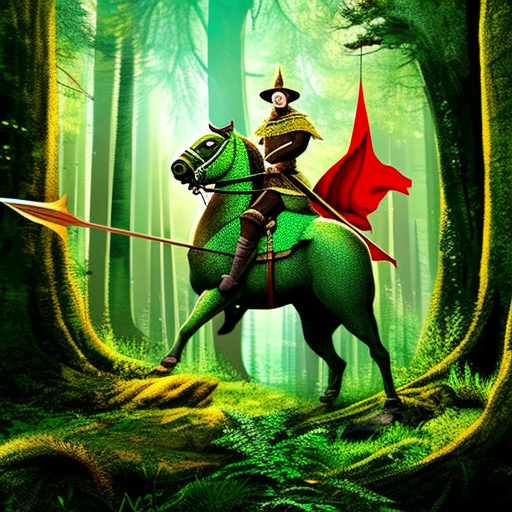Summary:
In “The Merry Adventures of Robin Hood” by Howard Pyle, the legendary outlaw Robin Hood and his band of merry men embark on a series of adventures in Sherwood Forest. They rob from the rich to give to the poor, challenging the corrupt authority of Prince John and the Sheriff of Nottingham. Through their escapades, Robin Hood becomes a symbol of justice and heroism, fighting against oppression and championing the cause of the common people.
Robbing the Rich, Giving to the Poor
Robin Hood, a skilled archer and swordsman, gathers a band of loyal followers in Sherwood Forest. Together, they devise a plan to take from the rich and give to the poor, redistributing wealth to those who have been oppressed by the corrupt rulers of Nottingham. They target wealthy nobles and corrupt officials, using their cunning and agility to outsmart their enemies. Robin Hood’s actions earn him the admiration and support of the common folk, who see him as a champion of justice.
Challenging Authority
Robin Hood’s main adversaries are Prince John and the Sheriff of Nottingham, who exploit their positions of power for personal gain. Prince John, acting as regent while King Richard is away, imposes heavy taxes on the people, causing widespread poverty and suffering. The Sheriff of Nottingham, a ruthless enforcer of the law, is determined to capture Robin Hood and put an end to his activities. Robin Hood and his band of outlaws constantly outwit and humiliate the authorities, challenging their oppressive rule.
Adventures in Sherwood Forest
“The Merry Adventures of Robin Hood” is filled with thrilling escapades and encounters. Robin Hood and his men engage in archery contests, rescue damsels in distress, and engage in daring robberies. They encounter various characters, including Little John, Friar Tuck, and Maid Marian, who become integral members of their band. The forest serves as a backdrop for their adventures, providing shelter and protection as they continue their fight against injustice.
- Robin Hood and his band of merry men rob from the rich to give to the poor, challenging the corrupt authority of Prince John and the Sheriff of Nottingham.
- Through their escapades, Robin Hood becomes a symbol of justice and heroism, fighting against oppression and championing the cause of the common people.
- The book explores themes of loyalty, friendship, and the struggle for social justice.
“Now, by Our Lady’s grace,” quoth Robin, “I will do thy bidding, and without pay or reward; for I love thee right heartily because thou hast promised to marry me.” – Robin Hood to Maid Marian
In “The Merry Adventures of Robin Hood,” Howard Pyle brings to life the legendary tales of Robin Hood and his band of merry men. The book is a delightful adventure filled with action, humor, and a sense of justice. Pyle’s vivid descriptions and engaging storytelling transport readers to Sherwood Forest, where they can join in the merry escapades of Robin Hood and his companions. The story not only entertains but also explores themes of loyalty, friendship, and the struggle for social justice.
Key takeaways from “The Merry Adventures of Robin Hood” include the importance of standing up against injustice, the power of friendship and loyalty, and the idea that even the most marginalized members of society can make a difference. The book reminds us that heroes can come from unexpected places and that fighting for what is right is always worth it.
So, grab your bow and arrow, join Robin Hood and his merry men, and embark on an adventure that will leave you cheering for justice and equality.












